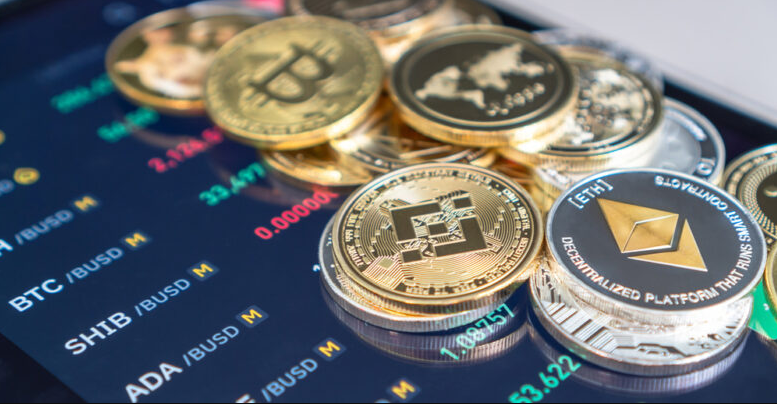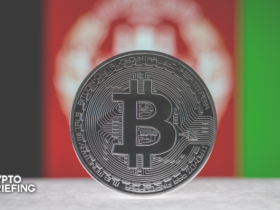Introduction
With the entrance of cryptocurrencies to the market, traders now have more options available to them. Developing a proficiency in project is to make time and perseverance.Nevertheless, investing in cryptocurrencies or equities carries a substantial level of risk. When it comes to trading, seasoned professionals always have an advantage over novices.
The primary basis for the senior investors’ or experienced broker’s trustworthiness is their superior market understanding. The world of buying can be lucrative, but there are also a significant number of merchants who are eager to benefit at the expense of others. By comprehending unethical market activities such as wash trading, even a novice in the financial industry can make smarter choices.
What exactly is Wash Transactions?
The practice of wash trading is a form of market engineering. Numerous market participants have access to sufficient resources and data to affect market sentiment in accordance with their needs. Open markets, such as stock and cryptocurrency exchanges, ought to provide an unbiased, equal-opportunity market environment for all traders; unethical behaviors can be detrimental to others.
The primary purpose of an investment market is to enable the general populace to earn returns on their money. The objective technique to make money from an investment option is to analyze the market’s characteristics and try to predict the impending rise or fall in stock prices using data analysis and technology assessment. However, strategies such as wash trading can alter, inflate, or deflate some market performance metrics, contributing to losses for others.
How are Wash Trades Executed?
Traders that are eager to generate profits at the expense of others’ losses participate in market manipulation strategies such as wash trading. In wash trading, an investor creates fraudulent sales and purchase orders in an attempt to create false market indicators. It indicates that the programmer is attempting to generate a false sense of demand for a specific cryptocurrency or stock by setting fictitious sale orders and purchasing the asset themselves.
In certain instances, wash trading may result in a collision between two parties. When a seller creates a new listing and a preset buyer generates a new order. When the sham transaction is complete, the seller refunds all or a significant portion of the purchase order money behind the scenes. For market observers and traders, it appears that there are still sales and purchase orders for that asset class that can enhance its demand through deceptive ways.
What are approaches for manipulating the market?
Trading tactics that are aimed to influence or mislead market analytics are known as market deception strategies. There are various strategies for manipulating the market. Traders who have spent a considerable amount of time in the industry are able to identify such hazards and make more prudent judgments to safeguard their investment portfolios. Additionally, wash trading is a form of market manipulation.
By purchasing a self-owned item on the open market, the wash traders do not immediately generate profits. However, by utilizing this strategy, they can gain an advantage. Consider a Whale investor who submits a fictitious $50 buy order for an asset with a $10 market value that he owns. In this instance, the poster of the fraudulent order may be required to pay for it out of personally.
However, by engaging in such a transaction, the wash trader is able to generate artificial interest in the asset class represented by the fictitious order. Due to the costly acquisition, there is a widespread belief among market participants that speculation would temporarily inflate the value of the asset class. The wash trader will take advantage of this false frenzy and sell the remainder of his stockpile of the same asset for a large profit.
On the other hand, speculators who invested in this asset class during the transitory price increase would eventually incur losses. In the majority of instances, wash trading and other market manipulation strategies attempt to inflate the market value of an asset class through guesswork and exaggeration. Inducing false trading activity and stealing organic data, wash trading can also confuse technical market experts.
Should Traders of Cryptocurrencies Oppose Wash Trading?
Due to the lack of rules in the bitcoin trading industry, there are several dubious and unsustainable investment strategies and methods. Conversely, wash trading is blatantly prohibited and illegal for stock market participants. However, many individuals continue to view wash washing as an intelligent trading approach.
However, the majority of industry insiders and others familiar with the investment sector think that wash trading is immoral because it involves deceptive representation, bluff, and losses for the majority of individuals. Based on conjecture and hype, wash traders attempt to generate a fictitious increase in the value of a certain asset type.
There are currently few preventative mechanisms in place on cryptocurrency investment platforms to deter wash trading. In addition, more investors must be made aware of this predatory pricing practice and demanding that it be altered. Chainalysis data indicates that there have been $14 billion in illicit crypto trade earnings to far, with the majority of these revenues originating from the NFT industry.
Notable is the fact that NFTs or Non-Fungible Tokens, which are frequently promoted as carriers of great arts, have become a hub for wash merchants. Digital Entrepreneurs have reported incidents such as the selling of CryptoPunk 9998 NFT for $532 million or 124,457 Ethereum. The blockchain transactions revealed that following the public sales, the vendor returned ETH against the purchase order of CryptoPunk 9998 to repay the debt used to finance the electronic artwork. According to Chainalysis, the NFT trading activity surged from $350 million to $40 billion between 2021 and 2022, indicating a worrisome increase in market psychological manipulation in the industry.
Is Wash Trading prohibited?
The bitcoin industry is mostly uncontrolled. Despite being a $3 trillion investment market, having thousands of versions worldwide, and existing in the majority of countries for more than 10 years, the cryptocurrency sector has continued to operate without the presence of laws or legislative clarity. The bitcoin community is one of the leading causes of lawlessness on the cryptocurrency market.
Cryptocurrencies are frequently offered to the populace as a means of evading centralized governments and financial regulations. Among digital currency investors, fragmentation is a highly acclaimed phenomenon. Any attempt by the government or financial authorities to impose restrictions is viewed as an invasive and oppressive approach.
On the other hand, the governments’ monopoly over the local finance and investment marketplaces is a hard reality. In addition, the taxation imposed on the sector is the focal point of any government authority’s control of cryptocurrency markets. In such a situation, the operators have no alternative but to accept the financial risks posed by wash trading and other market manipulation techniques.
However, there are rare occasions in which knowledgeable investors in digital currencies can speak out against injustice. Bithub is a virtual currency exchange based in South Korea. In 2018, Bithub investors complained and boycotted the platform in response to rumors of a $250 million price increase caused by wash trading.
Those unfamiliar with the investment sector or cryptocurrency trading may find the term wash trading to be somewhat complex and arcane. Anyone who has read the preceding sentences can comprehend the fundamentals of wash gambling. Nonetheless, other Price Fixing tactics can discourage novice investors. Here is an overview of the most typical methods of market manipulation for your consideration.
- Round-Tripping
- Tax Evasion
- Stacking
- Insider Trading
- Cash Advance
- Pump and Dump Strategy/Shared Ramping
- Slide
- Reproduction
- Papering Over the cracks
- Flying Costs
Round-Tripping
Round-tripping is frequently used as a synonym for wash trading. However, there remain a few methodological distinctions between the two types of market manipulation. In wash dealing, retail is the equivalent of round-tripping, which is a large-scale organized crime. In Wash Trading, a shareholder devised a deceptive false purchase order that he or she utilized just once.
In contrast, round-tripping is a sort of wash trading that has occurred multiple times. Most of the time, ethical investors use round-tripping to profit from short-term trading situations. Lenders can engage in large-scale wash trading or round-tripping by agreeing to undertake a fraudulent trade by forging bogus orders in an effort to drive the market price up or attract additional investor interest.
Tax Evasion
Money laundering is the process of seeking to transform illegal funds into legal ones. The malicious hackers who have profited from unlawful actions such as drug distribution, terrorism, etc., give the funds to the money launderers who are tasked with transforming it into a legally acceptable and untraceable status.
The money might be invested in cryptocurrencies or the stock market in order to create income. In certain instances, these fraudsters store their illegal company proceeds in foreign bank accounts to avoid legal punishment. Money launderers are more likely to engage in wash trading because they can easily finance fraudulent sales.
Layering
Layering is sometimes termed spoofing; it is often a fraudulent trading activity in which investors place fictitious purchase or sale orders. It can resemble wash trading significantly. Nevertheless, according to Da Vinci Investment Limited, layering investors include bogus or fictitious trading orders in their books to misrepresent the demand for a specific asset amongst many other traders.
The Layering approach is employed by selling parties who do not intend to fulfill their fraudulent purchase orders. The purpose of these purchase orders is to confuse other market participants and inflate the perception of demand for a certain asset class. Using Layering, market manipulators attempt to confuse the natural supply and demand dynamics of the market.
Market Manipulation
Market manipulation is a discriminatory trade practice in which an organization’s employee or a high-level executive discloses confidential information for financial gain. It is important to note that in the business world, information is worth its weight in gold. There are occasions in which a company representative provided non-public information for the benefit of a certain stockholder.
With insider trading, the biased and premature disclosure of information can forewarn a specific stockholder of impending losses or gains. On the other hand, the remaining stockholders do not have access to the same information. In some instances, insider trading can be conducted by corporate employees, who can modify their asset allocation based on the valuable data they obtain while working for the firm.
Cash Advance
Flash-loan is a quick form of Pump & Dump in which manipulative investors utilize collateral-free borrowing made available by many DeFi loan systems. In this instance, the borrowed monies are refunded within seconds. Malicious actors borrow substantial amounts of cryptocurrencies to manipulate the market and inflate demand.
Pump and Dump
Pump and dump is an additional deceptive market manipulation strategy that exploits market hysteria. Unethical traders use social media networks, television, and other forms of publicity to disseminate inflated or exaggerated asset class appreciation estimates. For a pump and dump, the programmer must also own a substantial quantity of the asset on which he or she is attempting to speculate.
With this form of artificial ramping up, opportunists attempt to enhance the asset’s market and attract as many new purchasers as feasible. Due to the absence of information, numerous traders end up investing their money in the overvalued asset, causing the price of the item to increase dramatically.
When the demagogues are confident that they can no longer inflate the price, they sell their enormous reserves of the instrument and push its dollar value to near zero or many times lower than it was previously.
Squeeze
According to regulatory guides released by Bank of England legislators, the Squeeze occurs when an investor attempts to establish a dominant position for an asset class in order to drive other investors to purchase it at a higher price than before. Simply put, a contraction is a type of financial manipulation in which a single person purchases a large proportion of a stock or cryptocurrency from the open market.
After becoming a high-volume investor or dominant shareholder, the squeezer can now choose the asset class’s new price. Therefore, the other investors who wish to acquire the stock or cryptocurrency are compelled to acquire it from the dropper at a premium price. Investors also refer to a squeeze as a corner on occasion.
Printing
Printing seems to be another form of market manipulation that matches wash trading closely. In WT, the manipulative investor attempts to increase the demand for an asset class by creating fictitious buy and sell orders. In contrast, for printing, the unethical investor educates people about a fictitious purchase with an exaggerated price.
In contradiction to the misleading report regarding speculative purchasing, no actual market exchange has transpired. Due to the existence of social media networks, printing has become really straightforward. Big Companies may employ social media influencers to disseminate incorrect and misleading information, so affecting the investments decisions of unwary shareholders.
Window Dressing
Window dressing is a rather advanced form of market manipulation. The information and technical scales that a greater majority of traders use to make spending decisions are owned by the successful traders. In window dressing, deceitful traders attempt to artificially inflate the closing price of their chosen asset class. Compared to wash trading and printing, lip service is extremely difficult to detect.
Flying Costs
Flying prices are also extremely close to wash trading. For skyrocketing prices, the issuer of a securities or cryptocurrency can disseminate unfounded rumors about a hyped or greater purchasing. Notably, when a security issuer or cryptocurrency project makes such a claim, they must have a legally enforceable agreement or buy order to avoid being considered a soaring price attempt.
Conclusion
Not only are financial fraud techniques unjust and unethical, but they can diminish the long-term credibility of an asset class, broker, or financial institution. To maintain economic stability in the cryptocurrency business, it is crucial that more digital currency investors are aware of these tactics and demand that exchanges and blockchain issuers implement internal regulatory adjustments to prevent economic problems.











 Bitcoin
Bitcoin  Ethereum
Ethereum  XRP
XRP  Tether
Tether  Solana
Solana  Dogecoin
Dogecoin  USDC
USDC  Cardano
Cardano  Lido Staked Ether
Lido Staked Ether  TRON
TRON  Chainlink
Chainlink  Avalanche
Avalanche  Sui
Sui  Wrapped stETH
Wrapped stETH  Wrapped Bitcoin
Wrapped Bitcoin  Toncoin
Toncoin  Stellar
Stellar  Hedera
Hedera  Shiba Inu
Shiba Inu  Polkadot
Polkadot  WETH
WETH  LEO Token
LEO Token  Litecoin
Litecoin  Bitcoin Cash
Bitcoin Cash  Hyperliquid
Hyperliquid  Bitget Token
Bitget Token  Uniswap
Uniswap  Official Trump
Official Trump  USDS
USDS  Wrapped eETH
Wrapped eETH  Pepe
Pepe  NEAR Protocol
NEAR Protocol  Ethena USDe
Ethena USDe  Aave
Aave  Aptos
Aptos  Internet Computer
Internet Computer  Ondo
Ondo  WhiteBIT Coin
WhiteBIT Coin  Ethereum Classic
Ethereum Classic  Monero
Monero  Mantle
Mantle  Cronos
Cronos  POL (ex-MATIC)
POL (ex-MATIC)  Render
Render  Dai
Dai  Algorand
Algorand  OKB
OKB  Artificial Superintelligence Alliance
Artificial Superintelligence Alliance 
Leave a Reply